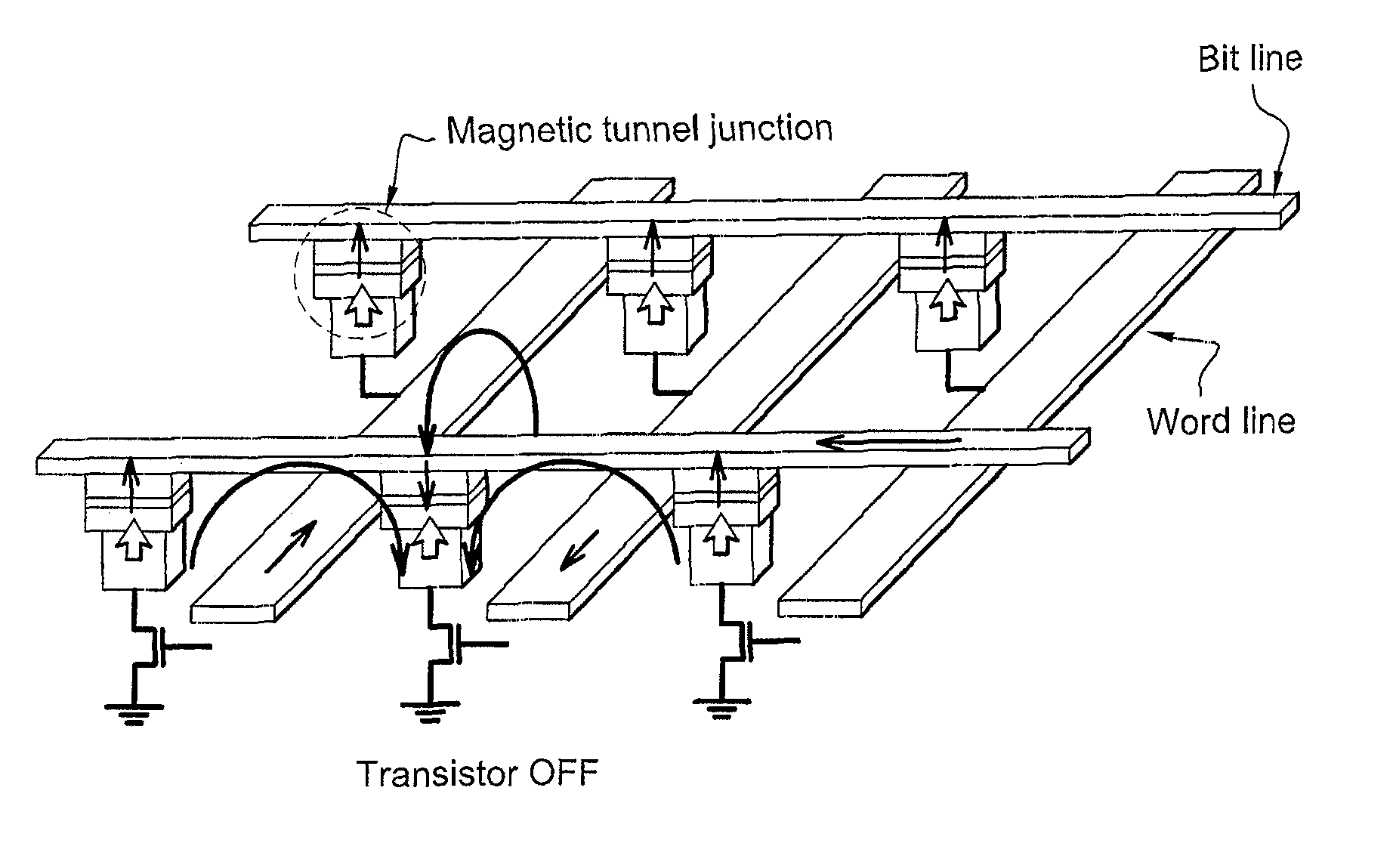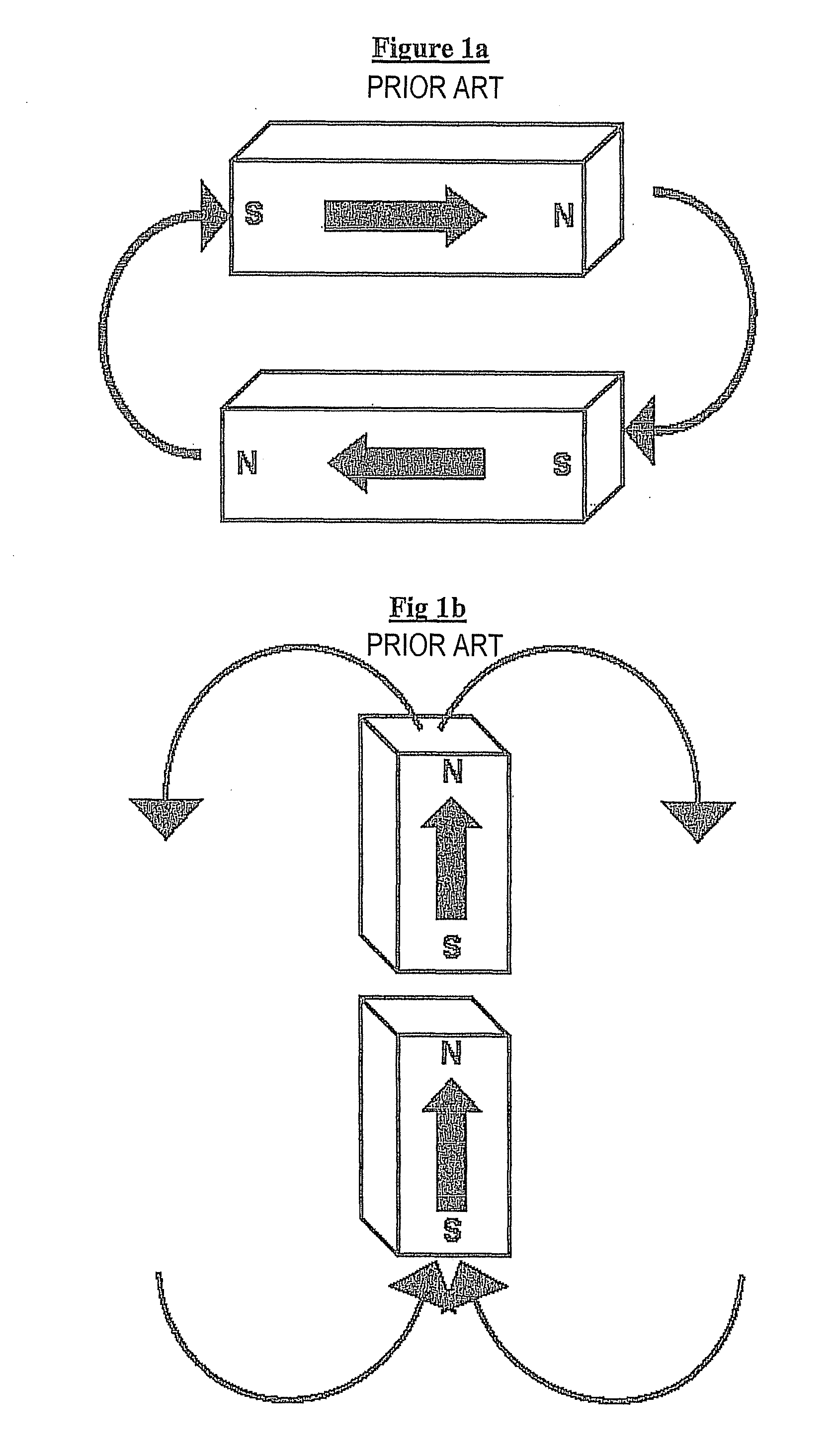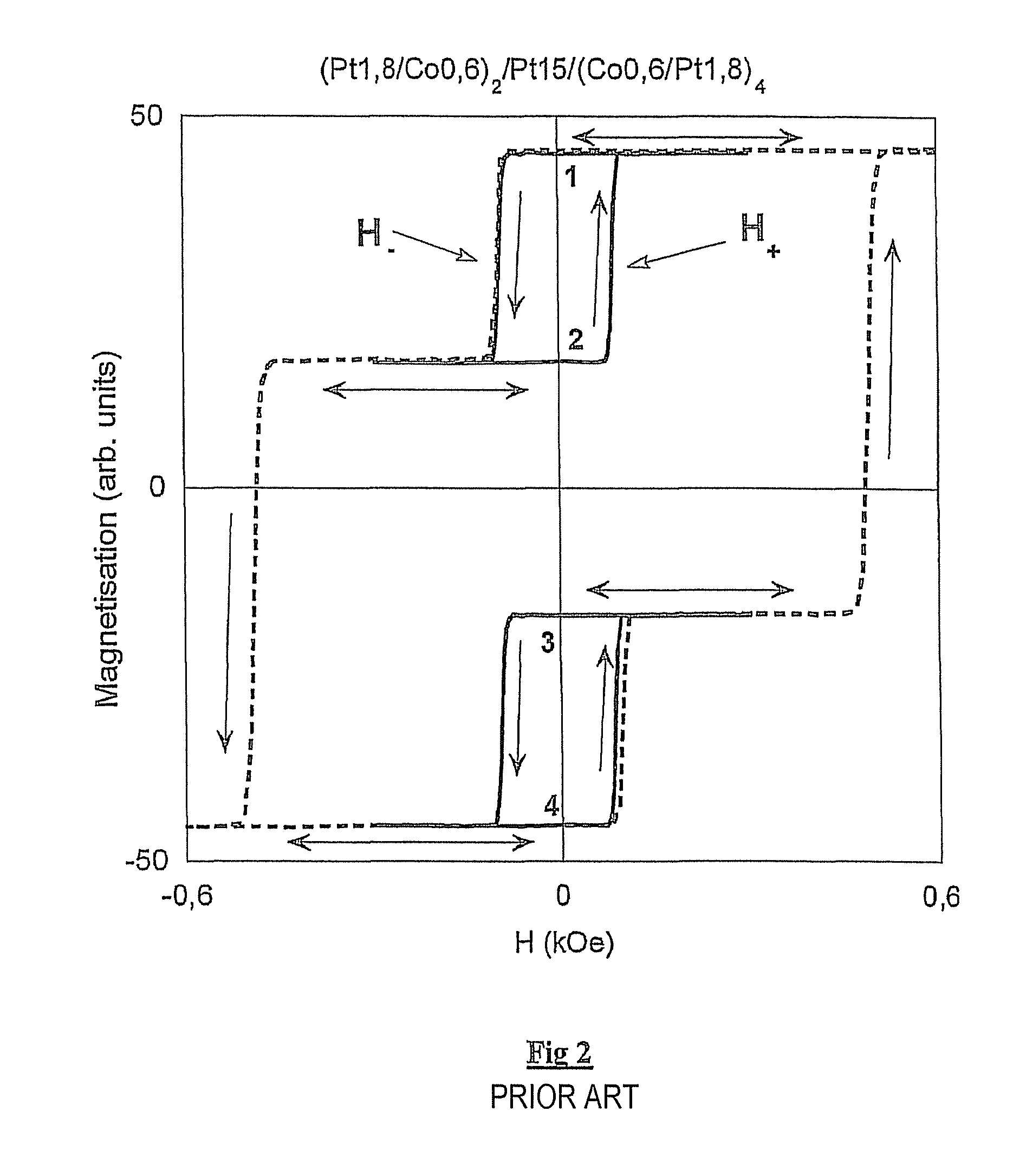Magnetic device having perpendicular magnetization and interaction compensating interlayer
a technology of perpendicular magnetization and magnetic devices, applied in the field of microstructures having magnetic properties, can solve the problems of increasing the thickness of the layer, the inability of the magnetic layer located either side of the interlayer to be magnetically independent of each other, and the shortening of the stack of magnetic devices
- Summary
- Abstract
- Description
- Claims
- Application Information
AI Technical Summary
Benefits of technology
Problems solved by technology
Method used
Image
Examples
Embodiment Construction
[0091]Among the types of magnetic interactions mentioned above, research has revealed, in particular, a type of coupling that occurs between two thin magnetic layers separated by a non-magnetic metallic interlayer (Systematic variation of the strength and oscillation period of indirect magnetic exchange coupling through the 3d, 4d, and 5d transition metals, S. S. P. Parkin et al, Physical Review Letters 67, 3598-3601 (1991)). This involves RKKY coupling (named after researchers Ruderman, Kittel, Kasuya and Yosida).
[0092]This RKKY coupling is capable of encouraging parallel alignment or antiparallel alignment of the magnetizations of magnetic layers located either side of the interlayer, depending on the nature and the thickness of the latter. The alignment of these magnetizations is determined by the nature of the non-magnetic metallic material and by its thickness, which must nevertheless remain small. In addition, this RKKY coupling is essentially non-dependent on the lateral dime...
PUM
 Login to View More
Login to View More Abstract
Description
Claims
Application Information
 Login to View More
Login to View More - R&D
- Intellectual Property
- Life Sciences
- Materials
- Tech Scout
- Unparalleled Data Quality
- Higher Quality Content
- 60% Fewer Hallucinations
Browse by: Latest US Patents, China's latest patents, Technical Efficacy Thesaurus, Application Domain, Technology Topic, Popular Technical Reports.
© 2025 PatSnap. All rights reserved.Legal|Privacy policy|Modern Slavery Act Transparency Statement|Sitemap|About US| Contact US: help@patsnap.com



